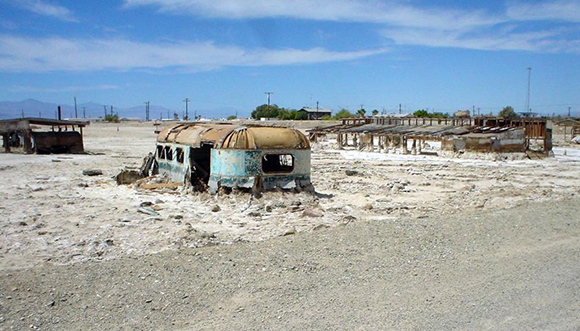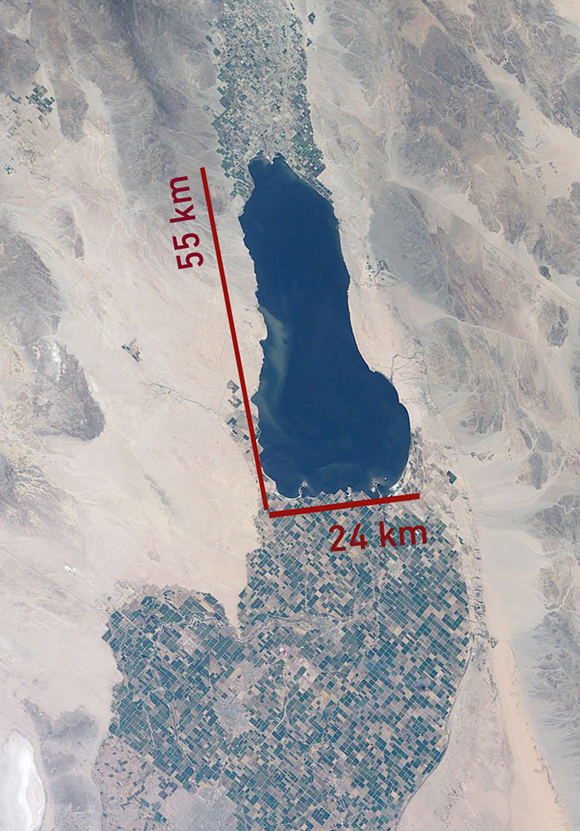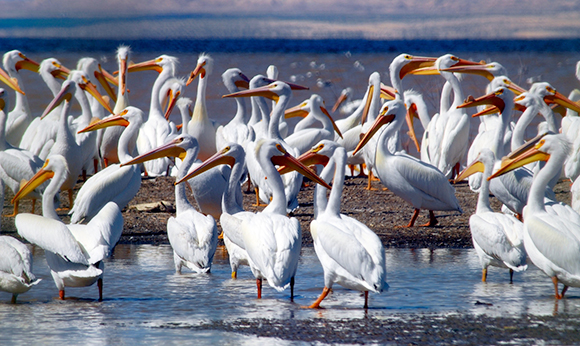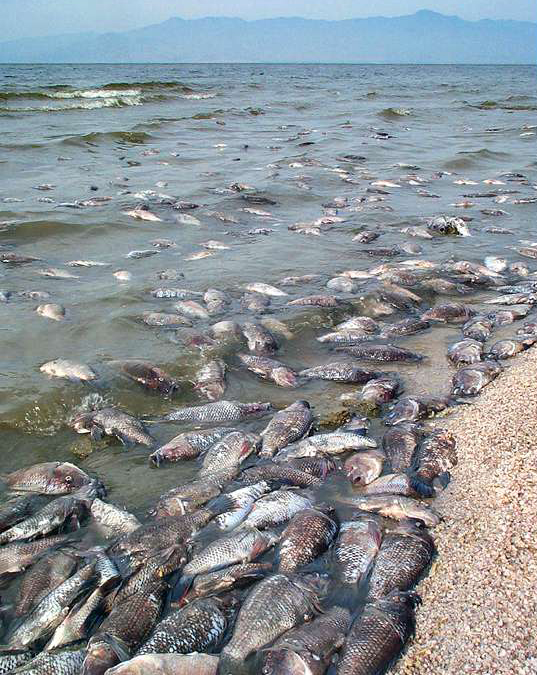The Salton Sea
Jaume Terradas explains how an error in channeling the water of the Colorado River in California created a large artificial lake that, now, is endangered by the great water demand from the crop fields and nearby cities.

The Aral Sea case is well-known as an example of resources and environment bad management, with catastrophic social effects, done by a communist regim, as I explained in an article from this blog on the environmental question at the USSR. The endorheic lake known as Salton Sea is located in southern California. This lake, which occupies part of an ancient inland sea that was mostly dried out some million years ago, depending in Colorado river’s changing course, was cyclically flooded with fresh or salty water, or dried again, for centuries.
The current lake was created by an error in an intervention aimed to exploit the waters of the Colorado River. In 1900, some canals were built to carry water from this river to irrigate more securely the Imperial Valley, which has fertile soils formed by the sediments from the Colorado river, which had been changing its course in function of the accumulation of these sediments for 400-500 years, giving rise to the above mentioned cycles of freshwater water – salt water – desert. The so-called Imperial Canal was filled with sediment in just two years. In 1905, there was a flood that broke some dykes and the river diverted in part of its course forming two new rivers, Alamo and New, which flooded into the Salton plain, about 1,000 km2 of desert. Most of the Colorado water continued to flow there for two years. The city of Salton and the Indian lands of Torres-Martínez were partly submerged.

In the 1950s, a residential and recreational tourist zone was built near the lake (it was named the California Riviera), but all was abandoned when the quality of the water diminished, many dead fish appeared, and also algae blooms and bad odors. Later, the Salton Sea became the destination of the irrigation surplus waters of the Imperial Valley. These waters come down loaded with fertilizers and pesticides. In addition, the New River is one of the most polluted in America. The level and the extension of the lake fluctuate enough according to the season, since the evaporation can be during long periods larger than the water inputs, which worsens the water quality. Between 1942 and 1978, the U.S. Navy had at Salton Sea a base for tests, which included inert nuclear weapons, and for manoeuvers. By 2014, the desiccation increased considerably, exposing much of the lake bed.
The Salton Sea was for a time a paradise for birds, of which had been counted about 400 species, the highest diversity in the entire continental territory of North America, with 30% of the total population of American white pelican (Pelicanos erythrorhynchos), and it was an obligatory stop to eat for many millions of migratory birds, most of which are fish-eaters.

The lake has a higher salinity than the Pacific Ocean (56 g/L in the Salton Sea, and 35 g/L in the Pacific Ocean), and this salinity increases yearly by 3%. But earlier this year the waters sent to maintain the level and salinity were diverted, in order to meet the growing demand of San Diego. As a result, the lake will lose surface and become even saltier, so the fishes will disappear. Invertebrates will be then the only food available for birds. Bradley and Yanega (2018) warn that the number of bird species will decrease, although some will increase their populations: those that like salt marshes and invertebrate-eaters. They also warn about the danger, for the hundreds of thousands of humans living in the surroundings, due to the winds that carry toxic dust from the dried up areas of the lake (this happened also in the Aral Sea). Salton Sea area is already one of the regions of the United States with more cases of hospitalization due to asthma. They propose a series of actions, which include the construction and maintenance of appropriate habitats in places becoming dried and the use of barriers to avoid the wind’s effects. The stench is frequently reaching the Imperial Valley and Coachella, and sometimes it is felt even in Los Angeles.
But it has been known for 15 years that things will get worse, and nothing is done or, to be precise, more water has been diverted. The pledges of funds for the restoration have been broken year after year. The costs of inaction have been calculated between 30 and 70 billion $ in 30 years due to respiratory diseases, loss of property values and ecosystems damage, and this does not include reductions in farm production. If in Polansky’s film Chinatown the corruption played in favour of diverting water from the city of Los Angeles to the fertile fields, today the demand for space and water from cities is so great that the fertile valleys are occupied and the availability of irrigation water is endangered, as well as aquatic habitats and migratory birds.

Solutions exist. Whether they are deferred again and again or, finally, put into practice, is only a matter of political will. The Salton Sea is a case quite similar to the much better known Aral Sea that was so much criticized in the ancient USSR.
REFERENCED ARTICLE
Bradley T.J., Yanega G.M. (2018). Salton Sea: ecosystem in transition. Science, 359, 6377: 754







